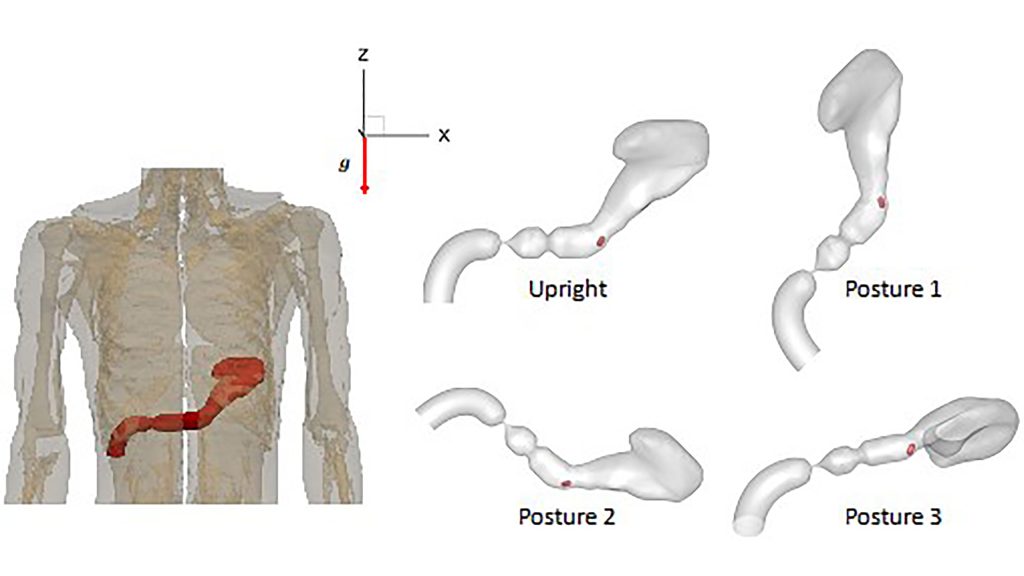From the Journal: Physics of Fluids
WASHINGTON, August 9, 2022 – A common, economic, and easy method of administering drugs is orally, by swallowing a pill or capsule. But oral administration is the most complex way for the human body to absorb an active pharmaceutical ingredient, because the bioavailability of the drug in the gastrointestinal tract depends on the medication’s ingredients and the stomach’s dynamic physiological environment.

In Physics of Fluids, by AIP Publishing, researchers from Johns Hopkins University and Johns Hopkins School of Medicine employ a biomimetic in-silico simulator based on the realistic anatomy and morphology of the stomach – a “StomachSim” – to investigate and quantify the effect of body posture and stomach motility on drug bioavailability.
“Oral administration is surprisingly complex despite being the most common choice for drug administration,” said co-author Rajat Mittal. “When the pill reaches the stomach, the motion of the stomach walls and the flow of contents inside determine the rate at which it dissolves. The properties of the pill and the stomach contents also play a major role.
“However, current experimental or clinical procedures for assessing the dissolution of oral drugs are limited in their ability to study this, which makes it a challenge to understand how the dissolution is affected in different stomach disorders, such as gastroparesis, which slows down the emptying of the stomach.”
Stomach contents, motility, and gastric fluid dynamics all play a role in a drug’s bioavailability, and stomach contractions can induce pressure and generate complex pill trajectories. This results in varying rates of pill dissolution and nonuniform emptying of the drug into the duodenum and, sometimes, gastric dumping in the case of modified-release dosage.
Together, these issues pose several challenges for the design of drug delivery.
“In this work, we demonstrate a novel computer simulation platform that offers the potential for overcoming these limitations,” said Mittal. “Our models can generate biorelevant data on drug dissolution that can provide useful and unique insights into the complex physiological processes behind the oral administration of pills.”
The modeling appears to be the first of its kind to couple gastric biomechanics with pill movement and drug dissolution to quantify an active pharmaceutical ingredient passing through the pylorus into the duodenum. The model enabled the researchers to calculate and compare the emptying rate and the release of a dissolved active pharmaceutical ingredient into the duodenum for a variety of physiological situations.
###
For more information:
Wendy Beatty
media@aip.org
301-209-3090
Article Title
Authors
by J.H. Lee, S. Kuhar, J.-H. Seo, P. J. Pasricha, and R. Mittal
Author Affiliations
Johns Hopkins University and Johns Hopkins School of Medicine
